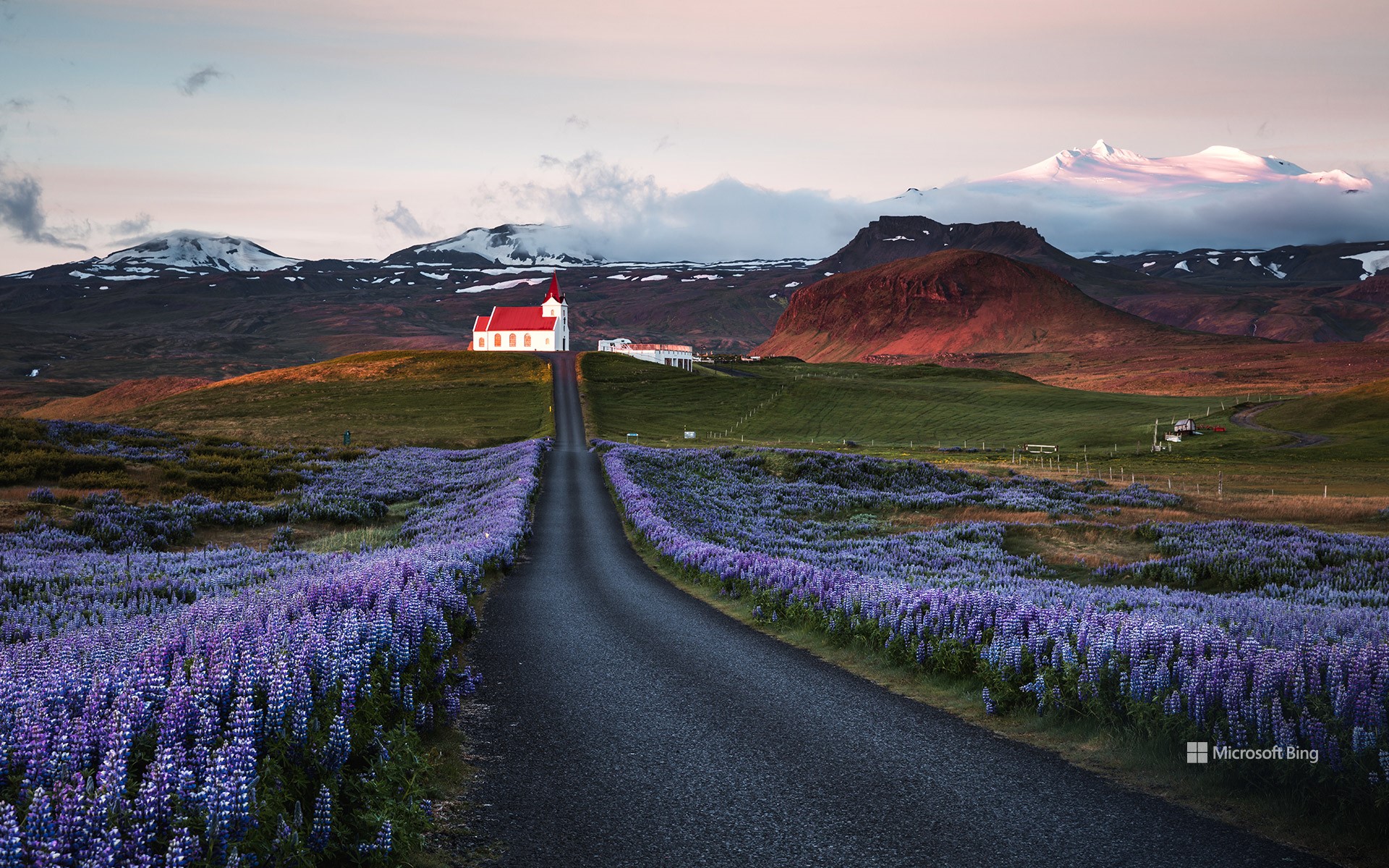日出时的羽扇豆田和教堂,斯奈山半岛,冰岛 Lupine fields and church at sunrise, Snæfellsnes Peninsula, Iceland (© Matteo Colombo/Getty Images)

日出时的羽扇豆田和教堂,斯奈山半岛,冰岛 Lupine fields and church at sunrise, Snæfellsnes Peninsula, Iceland (© Matteo Colombo/Getty Images)
羽扇豆田和教堂,斯奈山半岛,冰岛
随着冰岛春夏交替,崎岖的地貌呈现出五彩缤纷的景象。由于羽扇豆的根部具有土壤粘结性,冰岛在20世纪40年代引进了羽扇豆,用于控制水土流失。羽扇豆在含沙和含盐的土壤中生长茂盛,繁殖迅速,给乡村涂上了绚丽的紫色、粉色和蓝色。虽然有些人认为羽扇豆是一种入侵物种,会对本地植物造成威胁,但它深受当地人和游客的喜爱,被视为夏季景观的一大亮点。在雷克雅未克和斯科加福斯瀑布附近等多个地区都能看到羽扇豆花田。这些花儿也盛开在通往斯奈山半岛海利桑杜尔教堂的道路两旁,如今天的图片所示。
斯奈山半岛除了盛开着美丽的羽扇豆花之外,还有丰富而独特的地质地貌。如果你想在一个地方同时体验高耸的火山、广阔的熔岩区、迷人的冰川以及未受破坏的海滩,这里就是你寻找的理想之地。
Lupine fields, Snæfellsnes, Iceland
As spring gives way to summer in Iceland, the rugged landscape bursts into color. Lupines were introduced here in the 1940s for their soil-binding properties, to reduce erosion. The plant flourishes in sandy and salty soils and spreads rapidly, bringing hues of purple, pink, and blue. Although some consider lupine to be a threat to native plants, it is welcomed by many as a cherished part of the summer landscape. You can find lupine fields in Reykjavík, near the Skógafoss waterfall, and lining the road to the Hellissandur Church in the Snæfellsnes Peninsula, as seen in today's image.
评论已关闭